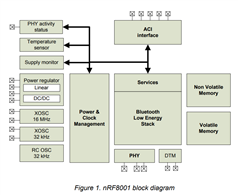Hello everyone,
This is my first post here. We are currently working on a graduation project and bought an MSP-EXP430FR5994MSP-EXP430FR5994 at Farnell to do some programming. Now, we are looking for wireless communication options. I have a hard time understanding the difference between a SoC and a module. I have read that SoC take longer to program and require more knowledge about RF-engineering. Does this mean that SoC never have antennas?
A possible candidate of ours is the nRF52810. However I see now that this is a SoC. Since we are limited in time, does this mean this is not a good option for us?
Also, I hear about BLE devices with built in microcontrollers. Would this then be a SoC?
Any help would be much appreciated!
Kind regards,
Robbin

